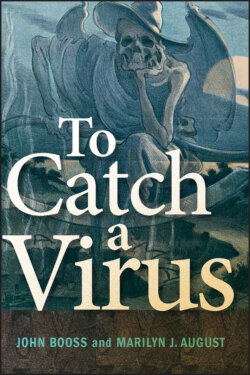Читать книгу To Catch a Virus - John Booss - Страница 31
Standardization of Reagents for the First Diagnostic Laboratories
ОглавлениеBy the 1940s, the technical advances made it possible to establish viral diagnostic laboratories. Evidence is marked by the appearance of first editions of two books that would run through several editions: Rivers’s Viral and Rickettsial Infections of Man (37) and Francis’s Diagnostic Procedures for Virus and Rickettsial Diseases, published by The American Public Health Association (15). Because the techniques used were often the same for both types of infectious agents, early labs were set up for viral and rickettsial diseases. The development of diagnostic capacities occurred none too soon, because the world was to embark on the massive conflict of World War II. The U.S. Army established the first general diagnostic virology and rickettsiology lab. It was set up at Walter Reed Army Medical Center in Washington, DC, in January 1941 under Colonel Harry Plotz. Plotz’s investigative background was in rickettsial and viral diseases.
In 1940, commenting on serological techniques, C. E. van Rooyen and A. J. Rhodes wrote, “The principal difficulty, in fact, involves preparation of suitable antigens” (50). When the U.S. Army diagnostic lab was established, there was an urgent need to develop diagnostic reagents and standardize procedures. The Army did this as Smadel described in 1948 concerning the hemagglutination inhibition assay for the diagnosis of influenza: “. . . the United States Army adopted a single procedure, and, in addition, supplied its laboratories with standard antigens and antisera” (42). Smadel, who had worked at the Rockefeller Institute developing complement fixation assays (41) and who directed the viral and rickettsial diagnostic lab in the European Theater of Operations in World War II, returned to assume leadership of the diagnostic lab at Walter Reed in 1946 (Smadel Archives, Walter Reed Army Institute of Research, organized by Andrew Rogalski). Possessed of a keen analytic temperament and a personality at once forceful and supportive (D. Carleton Gajdusek and M. B. A. Oldstone, personal communications), Smadel was to remain a major figure in virology for several years.
The foundation was in place for serology in diagnostic virology laboratories with Sternberg’s neutralization of vaccinia virus on the skin of a calf in 1892, by Bordet and Gengou’s description of complement fixation in a hemolytic assay in 1901, and, to a lesser extent, by Hirst’s 1941 study of the inhibition of hemagglutination of influenza virus. By 1956, in a consideration of diagnostic procedures in laboratory diagnosis, Edwin H. Lennette was to write, “By far the greatest proportion of examinations conducted in a diagnostic laboratory consists of serologic tests. These comprise the complement fixation, agglutination, hemagglutination, hemagglutination-inhibition, and in vitro neutralization techniques. The complement fixation method finds the greatest application, with hemagglutination and neutralization tests next, and the agglutination tests the least commonly used” (23).
